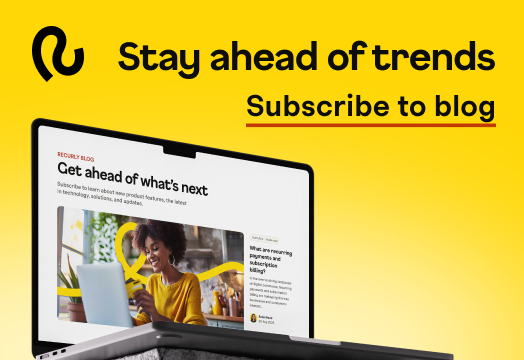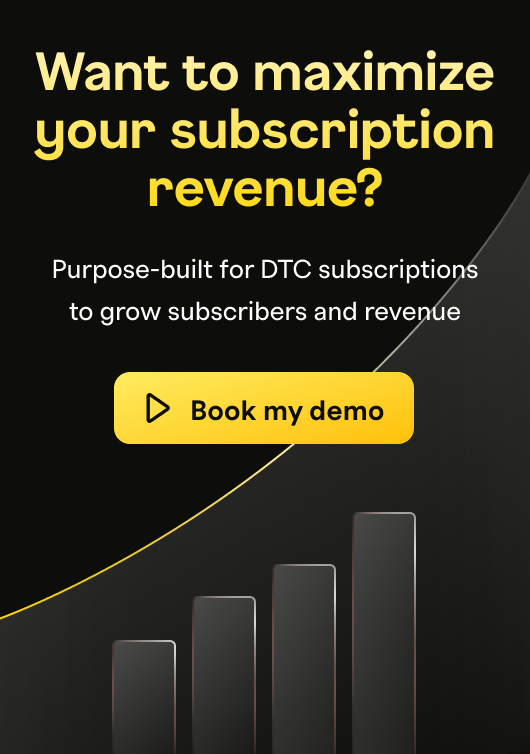The FTC click-to-cancel rule is gone, but easy cancellations are here to stay

The subscription world was watching closely as the Federal Trade Commission (FTC) prepared to roll out its click-to-cancel rule. The provision was clear: if a customer can sign up for a service online, they should be able to cancel it just as easily.
The rule was set to go into effect on July 14, 2025. However, just a week before, the U.S. Court accused the FTC of making a procedural error by failing to present a preliminary regulatory analysis, which is required for rules whose annual impact on the economy is more than $100 million.
Because of that, the court decided to vacate the rule.
While this might sound like a relief from regulatory complexity, it is not a green light to make cancellations difficult.
An easy, transparent cancellation process is one of the most powerful — and counterintuitive — tools you have for building a sustainable subscription business. It shows confidence in your product and respect for subscribers' choices, making them more likely to return in the future.
Reimagining the cancellation experience
Thinking of the cancellation process as just an exit point is a missed opportunity. Instead, view it as another key touchpoint in the subscriber journey — one that can actually strengthen your relationship with your customers, even if they decide to leave.
Here are a few best practices for creating a cancellation experience that prioritizes the customer and benefits your business.
1. Keep it clear, simple, and digital
The core idea of the FTC’s rule was to eliminate friction. If a customer has to search endlessly for a cancellation link, wait on hold, or answer a dozen questions, their final experience with your brand will be a frustrating one. That frustration doesn't just lose you a subscriber; it can lead to negative reviews, damage your brand's reputation, and ensure that customers never consider coming back.
A simple cancellation builds trust by showing that you aren't trying to hold them hostage. This positive final impression is crucial since churn is often not the end. In truth, 20% of all new acquisitions are actually returning subscribers. A smooth off-boarding process leaves the door open for that return.
2. Offer a pause, not just a stop
Sometimes, "I want to cancel" doesn't mean "I want to leave forever." It might mean, "I need a break," "I'm traveling for a month," or "My budget is tight right now." Forcing a choice between keeping and canceling a subscription ignores this nuance and can lead to unnecessary churn.
Imagine you run a fresh seafood subscription company like Sea Forager. One of your subscribers is traveling back home during the summer and can’t receive their weekly box. They don’t want to unsubscribe, but also don't want seafood piling up on their doorstep under the California heat. This is where the pause feature becomes invaluable.
Allowing subscribers to temporarily stop their subscriptions is a game-changer for retention. According to our research, the use of subscription pauses surged by 68% in 2024. More importantly, businesses that offer a pause option instead of an outright cancellation retain over 51% of those at-risk customers.
A pause provides the flexibility consumers expect. It acknowledges their changing needs and gives them a reason to stay connected to your brand. And the financial impact is significant — our data shows that over $200 million in revenue was generated from subscribers who re-subscribed after pausing. It’s a win-win: the customer gets the break they need, and you keep a valuable relationship alive.
💡See how Userlike retains 20% more subscribers with the pausing option
3. Create an opportunity for a second chance
When a subscriber clicks cancel, they’re giving you direct feedback. It’s your turn to listen and respond in a way that shows you value their business. The cancellation flow is the perfect place to present a cancel-save offer that addresses potential reasons for leaving.
Is the price too high? Is the plan not the right fit? 70% of subscribers would reconsider canceling if they were offered a loyalty incentive, like a discount. The cancellation moment is your last, best chance to make that offer.
Instead of just a confirmation screen, your cancellation flow can include options like:
A temporary discount: "We'd hate to see you go! Here's 25% off your next three months"
A plan downgrade: "Did you know we have a lighter plan? Switch and save"
A personalized incentive: Remind them of the value they're getting and offer a perk to stay
These offers transform the cancellation process from a simple transaction into a dynamic conversation, giving you a final opportunity to demonstrate your value and adapt to customers' needs.
Building loyalty, even at cancellation
So what's the bottom line? Even though the FTC's rule is off the table, making it hard for customers to leave is a losing game. You might save a few subscriptions in the short term, but you're sacrificing long-term trust and loyalty.
By making your cancellation process clear and flexible, you're not just managing churn — you're building a stronger, more resilient brand. You're showing customers that you're confident enough in your value to let them leave on their own terms.
That confidence is what turns a canceling subscriber into a returning one, and a returning subscriber into a loyal advocate for your brand. In the long run, that's far more valuable than any regulatory loophole.
Want to learn more proven strategies? Check out our ultimate guide for retention.

